The presidential debate between Kamala Harris and Donald Trump continues to spark widespread interest. While many commentators are focused on determining who won the debate, we take a different approach – what emotions dominated during their speeches? With Sentimenti’s tools, we can accurately measure emotions and sentiments to reveal what truly lay behind the candidates’ words.
Our analysis is based on the debate transcript prepared by ABC News, which can be read here: ABC News – Harris-Trump Presidential Debate Transcript.
Sentiment and Arousal: Key Indicators of Emotion in the Presidential Debate
The foundation of our analysis is the measurement of sentiment and emotional intensity (arousal). But what exactly does that mean? At Sentimenti, we analyze both positive and negative sentiments, allowing us to determine whether a given text conveys positive or negative emotions. Arousal, on the other hand, measures the intensity of these emotions – the higher the arousal, the more emotionally charged the statements are.
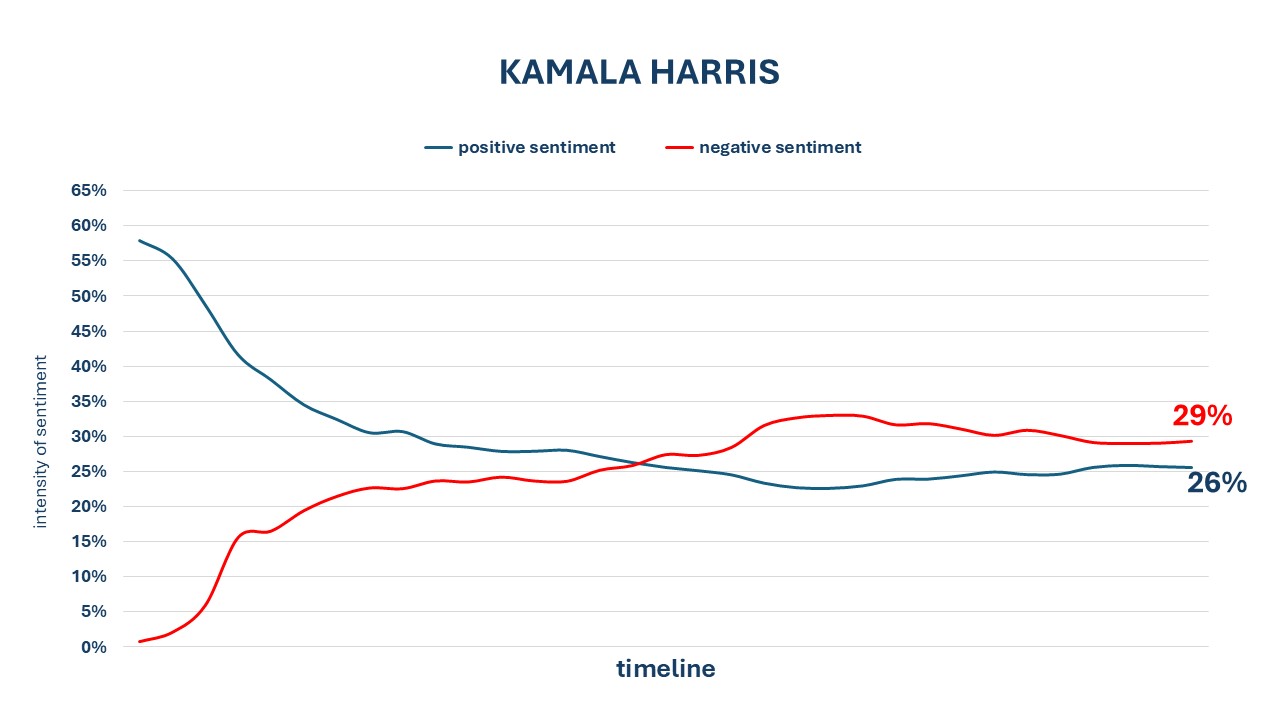
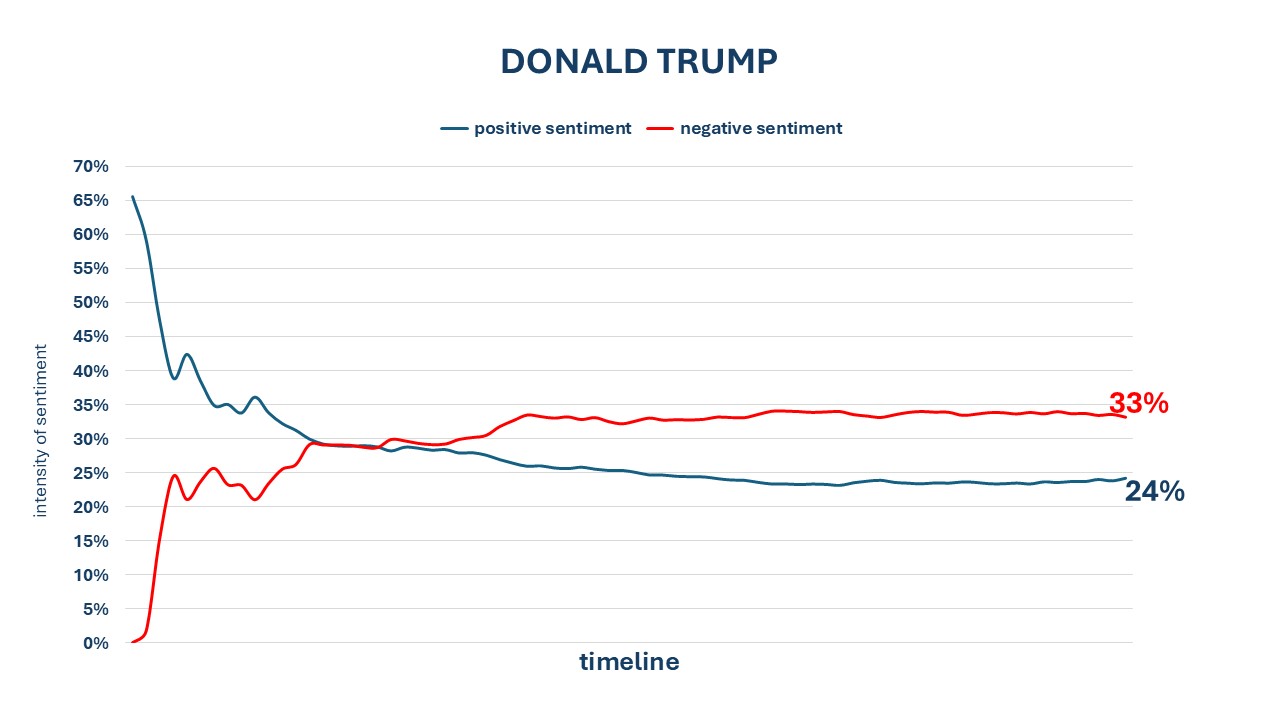
At the start of the debate, both candidates seemed to maintain a positive tone. Harris began with a sentiment score of 58%, while Trump started at 66%. But that was just the calm before the storm. As the debate progressed, things became increasingly intense, with Trump being the first to launch an attack. Harris responded in kind, and the tone of the discussion shifted toward more negative sentiment.
When it comes to arousal, Harris started the debate with a more composed demeanor. However, as time went on, the intensity of her statements matched Trump’s, and this equilibrium persisted until the end of the debate.
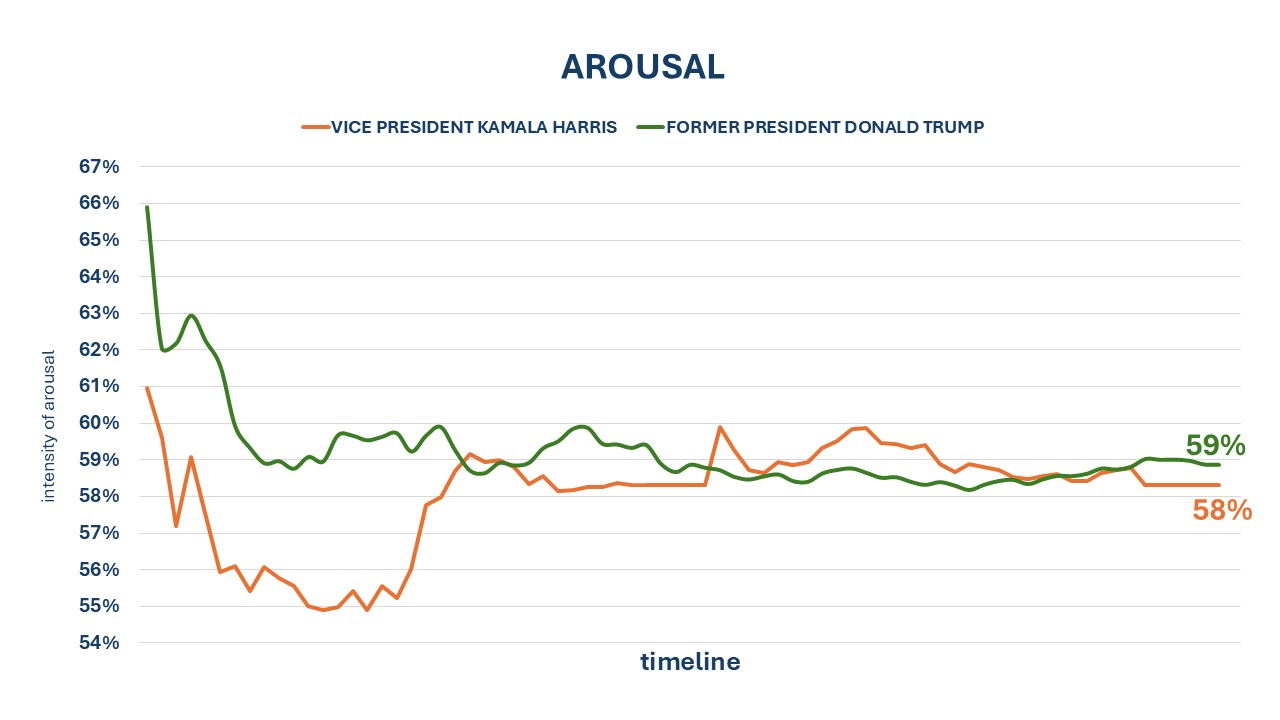
Sentiment vs Emotion: What Feelings Dominated the Harris – Trump Debate?
While sentiment is important, it’s equally critical to analyze specific emotions. We focused on two opposing emotions, according to Robert Plutchik’s theory: trust and disgust. The results are fascinating.
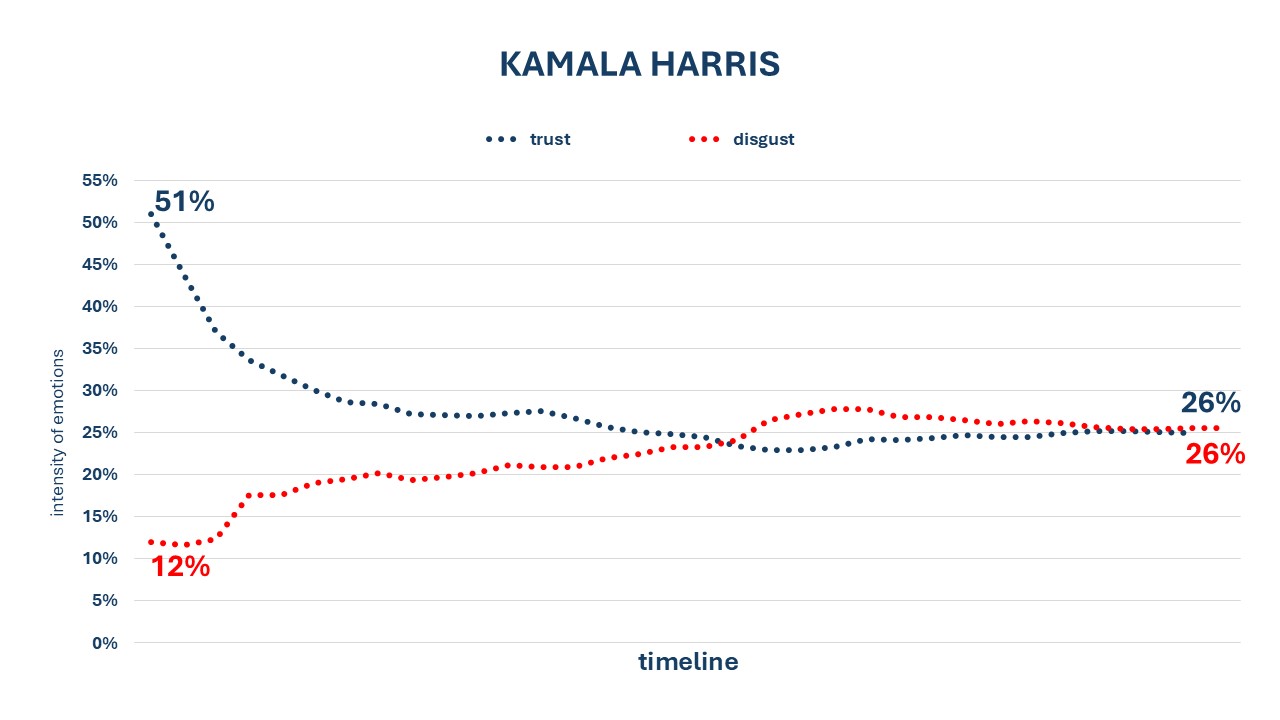
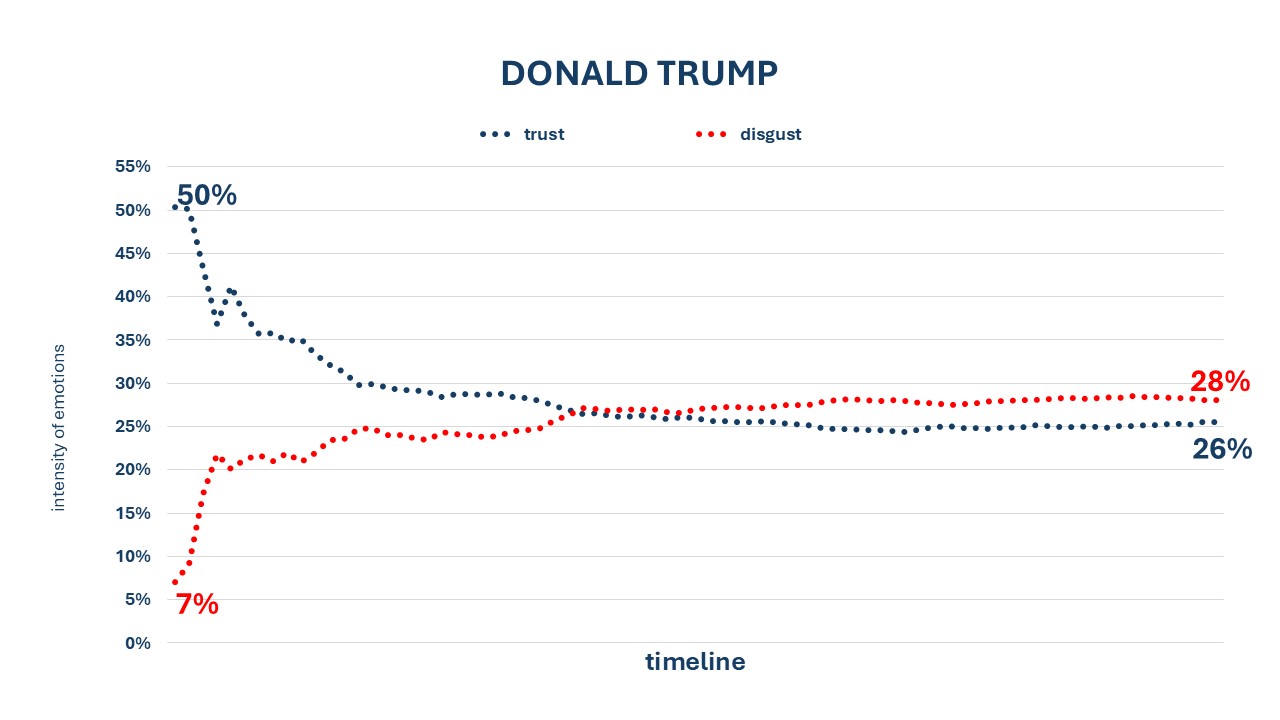
Initially, both candidates attempted to evoke trust, particularly when discussing their own policy proposals. However, as time passed, the emotion of disgust began to take over, especially in their criticisms of each other.
During the Q&A portion of the debate, the strategy of negating the opponent became the primary approach for both candidates. Ultimately, trust was overshadowed by disgust, giving the debate an increasingly sharp and confrontational atmosphere.
Emotion Analysis in the Candidates’ Final Statements
As with any debate, this one ended with final statements. These segments are often seen as the most memorable moments for viewers, so we analyzed them separately.

Kamala Harris, in her final statement, focused on promoting positive solutions and highlighting her proposals, while avoiding direct attacks on Trump. As a result, her positive sentiment and trust emotion surged compared to the responses she gave earlier in the debate. Donald Trump, on the other hand, remained within the same negative narrative framework, focusing on attacking his opponent. This led to the dominance of disgust and negative sentiment in his closing remarks, making it difficult for him to present his own solutions in a way that evoked trust or positive sentiment.
Conclusion: How Emotions Shape Political Debates
The emotion analysis of the Harris – Trump presidential debate shows how emotions can shape the perception of political discussions. Initially, the candidates started with positive sentiment, but this gradually gave way to more negative emotions, particularly disgust. Both candidates consciously used emotions to elicit specific reactions from the audience.
Curious to learn more about how emotions impact your content? With Sentimenti’s tools, you can precisely measure emotions in texts and better understand how your words affect your audience.